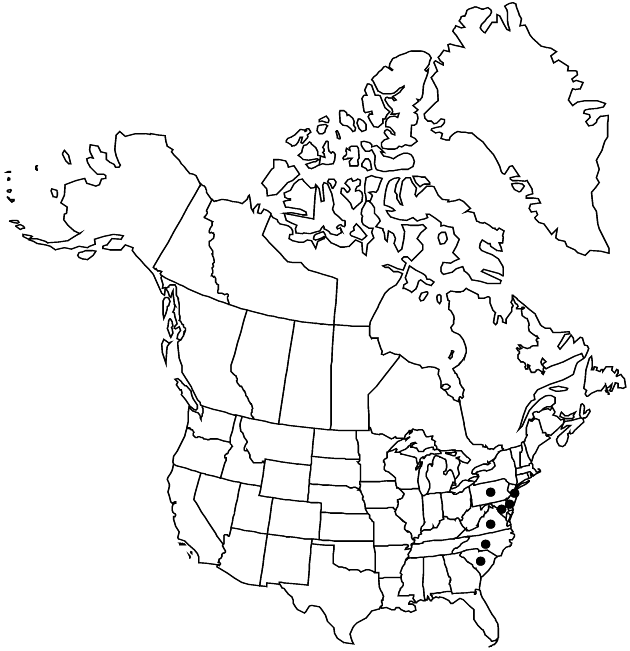Liatris pilosa
Sp. Pl. 3: 1636. 1803.
Plants 40–120 cm. Corms globose. Stems glabrous or sparsely to moderately pilose distally or throughout. Leaves: basal and proximal cauline 1-nerved, narrowly oblanceolate, 60–170(–200) × 2–7(–11) mm, abruptly to gradually reduced distally (becoming linear, spreading-ascending), essentially glabrous or sparsely pilose (abaxially), gland-dotted (proximal margins piloso-ciliate). Heads in loose to dense, racemiform to spiciform arrays (internodes 1–7 mm). Peduncles 0 or (ascending) 1–10(–80) mm. Involucres turbinate to campanulate-cylindric, (7–)8–10 × 5–6 mm. Phyllaries in (3–)4–5(–6) series, oblong, unequal, essentially glabrous, margins with hyaline borders (0.2–0.4 mm wide), erose to lacerate, ciliolate, apices usually rounded, rarely acute. Florets (6–)7–12(–13, mostly 9–12 in Del. and N.J.); corolla tubes pilose inside. Cypselae (2.5–)3–4 mm; pappi: lengths ± equaling corollas, bristles barbellate. 2n = 20.
Phenology: Flowering (Aug–)Sep–Oct(–Nov).
Habitat: Old fields, pine barrens, scrub oak-pine sandhills, openings in pine, oak, and oak-hickory woods, tidal marsh edges, sandy fields, dune hollows, wet sand near beaches, edges of tidal marshes, sand to sandy clay-loam
Elevation: (0–)10–500 m
Distribution

Del., Md., N.J., N.C., Pa., S.C., Va.
Discussion
Selected References
None.